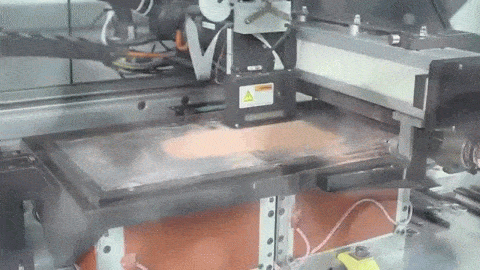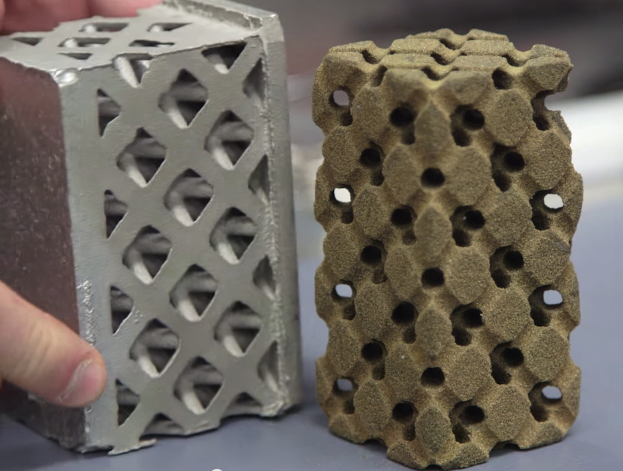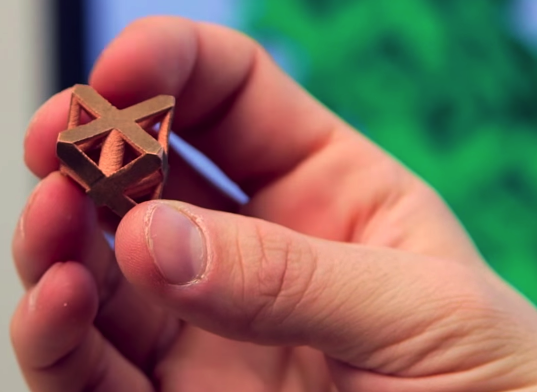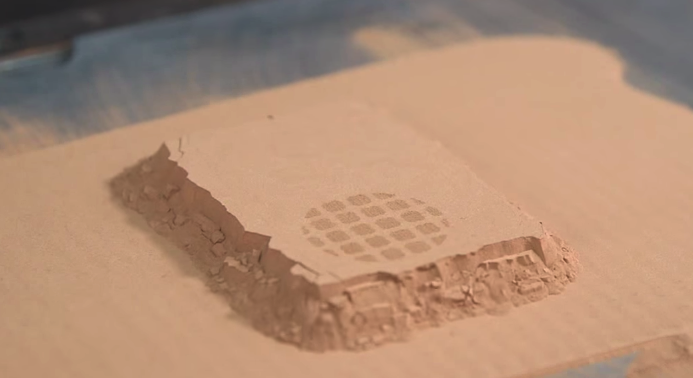 Copper is a material that is used extensively throughout many major industries. Whether it is the construction industry, the manufacturing of machinery and electronic components, or even for household items and transportation equipment, copper plays a significant role in all of our lives. Traditional manufacturing techniques for copper can be very expensive, wasteful and hard to come by. However, if researchers at Virginia Polytechnic Institute and State University (VT) have their way, we may soon see a more efficient, more affordable, and much more accessible means of manufacturing copper objects in the near future.
Copper is a material that is used extensively throughout many major industries. Whether it is the construction industry, the manufacturing of machinery and electronic components, or even for household items and transportation equipment, copper plays a significant role in all of our lives. Traditional manufacturing techniques for copper can be very expensive, wasteful and hard to come by. However, if researchers at Virginia Polytechnic Institute and State University (VT) have their way, we may soon see a more efficient, more affordable, and much more accessible means of manufacturing copper objects in the near future.
You may recall a story we’ve covered in the past pertaining to a machine called the Dream Vendor 2.0, developed by the Mechanical Engineering Department at Virgina Tech University. It’s a vending machine of sorts for 3D printers. These machines allow students and faculty to upload a design and have them 3D printed in a fashion similar to how a traditional vending machine works.
While this itself has been quite a development, the school’s 3D printing endeavors and studies certainly don’t end here. In fact, Dr. Christopher Willams, an Associate Professor in the Department of Mechanical Engineering at VT, is currently working on a machine that can 3D print copper parts and components. While the 3D printing of metal is nothing new, as there are several companies who already make DMLS (direct metal laser sintering) machines, as well as EBM (electron beam melting) 3D printers, Williams and team have devised a different type of printer that can print using a metal which isn’t exactly the easiest to work with.
“What we are doing that’s different, is that we are printing copper,” Williams explains. “It’s a really tricky metal to create. We are working with a process called binder jetting. In that process, you’re using an ink jet head to actually selectively jet glue into a bed of (copper) powder, one layer at a time. Once the part is created in that fashion, we then take it to a furnace to then sinter or fuse the particles together to make the metal part.”
 While the process is quite productive in creating various copper parts and components, there are still some hurdles which Williams and his team are trying to overcome. Most notably, when these copper parts are printed and then fused via heat, there remains tiny pockets of air between the individual pieces of powder. This makes for parts that are much weaker than those created from more traditional manufacturing means, such as the milling of copper blocks. The team, however, is working on testing a hypothesis that a nanosuspension binder can be used to fill these interstitial voids in the part bed in order to increase part density and bond neighboring powder particles during the sintering process.
While the process is quite productive in creating various copper parts and components, there are still some hurdles which Williams and his team are trying to overcome. Most notably, when these copper parts are printed and then fused via heat, there remains tiny pockets of air between the individual pieces of powder. This makes for parts that are much weaker than those created from more traditional manufacturing means, such as the milling of copper blocks. The team, however, is working on testing a hypothesis that a nanosuspension binder can be used to fill these interstitial voids in the part bed in order to increase part density and bond neighboring powder particles during the sintering process.
In essence, they are looking to add nanoparticles to the jetted glue, expecting that this will fill in the empty pockets which are formed during sintering.
“We hope [that this will] improve its sintering performance and its mechanical performance and its electric conductivity,” explains Williams. “We hope that we’ll be able to share these results, and enable engineers and designers to design new copper products for energy applications, thermal applications, structural applications with any kind of complexity that you can imagine.”
 If all goes as planned, Williams expects this unique process will be ready for widespread use within just five years. If this ends up being the case, we can probably expect to see all sorts of advancements in electronics, as the thermal management of mechanical and electrical products improve, and just about every manufacturing industry will be effected positively to some degree. What do you think about this new 3D printer? Discuss in the Copper 3D Printer forum thread on 3DPB.com. Check out the video below:
If all goes as planned, Williams expects this unique process will be ready for widespread use within just five years. If this ends up being the case, we can probably expect to see all sorts of advancements in electronics, as the thermal management of mechanical and electrical products improve, and just about every manufacturing industry will be effected positively to some degree. What do you think about this new 3D printer? Discuss in the Copper 3D Printer forum thread on 3DPB.com. Check out the video below:
Subscribe to Our Email Newsletter
Stay up-to-date on all the latest news from the 3D printing industry and receive information and offers from third party vendors.
Print Services
Upload your 3D Models and get them printed quickly and efficiently.
You May Also Like
Making 3D Printing Personal: How Faraz Faruqi Is Rethinking Digital Design at MIT CSAIL
What if your 3D printer could think more like an intelligent assistant, able to reason through a design idea, ask questions, and deliver something that works exactly the way the...
Reinventing Reindustrialization: Why NAVWAR Project Manager Spencer Koroly Invented a Made-in-America 3D Printer
It has become virtually impossible to regularly follow additive manufacturing (AM) industry news and not stumble across the term “defense industrial base” (DIB), a concept encompassing all the many diverse...
Heating Up: 3D Systems’ Scott Green Discusses 3D Printing’s Potential in the Data Center Industry
The relentless rise of NVIDIA, the steadily increasing pledges of major private and public investments in national infrastructure projects around the world, and the general cultural obsession with AI have...
Formlabs Teams Up with DMG MORI in Japan
In late June, Nick Graham, Chief Revenue Officer at Formlabs, announced on LinkedIn that the company had partnered with DMG MORI, one of the world’s leading machine tool companies, to...



































